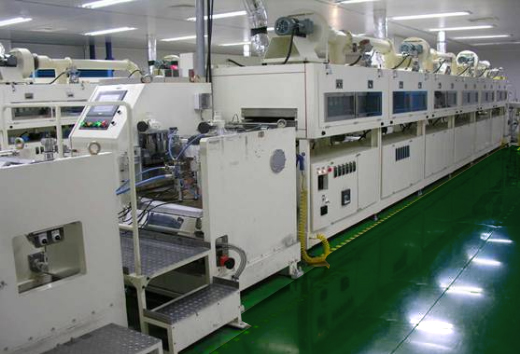Lithium Iron Phosphate Battery: In-depth Analysis of its Technical Principles and Characteristics
Lithium iron phosphate battery, as an important type of lithium-ion battery, has occupied a place in the field of energy storage since its birth due to its unique performance advantages. This article will thoroughly analyze the technical principles, structural characteristics and significant features of LFPB, but will not cover specific application areas and future prospects.
Technical Principles and Structural Features
The lithium iron phosphate battery, whose full name is lithium iron phosphate lithium-ion battery, is based on the use of lithium iron phosphate (LiFePO?) as the positive electrode material, while the negative electrode is usually made of carbon (graphite) material. The design of this battery allows its single cell nominal voltage to reach 3.2V, and the charge cut-off voltage is controlled between 3.6V and 3.65V.

From the perspective of battery structure, the left side of the lithium iron phosphate battery is the olivine-structured LiFePO? positive electrode material, which is connected to the positive electrode of the battery by aluminum foil; the right side is the carbon (graphite) negative electrode, which is connected to the negative electrode of the battery by copper foil. In the middle is a polymer separator, which effectively separates the positive electrode from the negative electrode, but allows lithium ions to pass through, but not electrons. The battery is filled with electrolyte and sealed with a metal case to ensure the safety and stability of the battery.
During the charging and discharging process, the operating principle of lithium iron phosphate batteries depends on the migration of lithium ions. During charging, some lithium ions in the positive electrode LiFePO? are released, transferred to the negative electrode through the electrolyte and embedded in the carbon material of the negative electrode; at the same time, the electrons released from the positive electrode flow to the negative electrode through the external circuit to maintain the balance of the chemical reaction. During discharge, the process is reversed. Lithium ions are released from the negative electrode and return to the positive electrode through the electrolyte. At the same time, electrons are released from the negative electrode and flow to the positive electrode through the external circuit to supply energy to the outside world.
Key Features
Lithium Iron Phosphate battery can stand out among many lithium-ion batteries mainly because of the following significant features:
High operating voltage and high energy density: The single cell nominal voltage of LFPB reaches 3.2V, and it has high energy density, which means it can store more electrical energy in the same volume or weight.
Long cycle life: Compared with other types of lithium-ion batteries, lithium iron phosphate batteries have a longer cycle life, generally reaching more than 2,000 times, and even more than 3,500 times under certain conditions. This long life characteristic makes it more advantageous in situations where frequent charging and discharging is required.
Excellent safety performance: The P-O bond in the lithium iron phosphate crystal structure is stable and difficult to decompose. Even under high temperature or overcharge conditions, it will not easily experience thermal runaway or form strong oxidizing substances like materials such as lithium cobalt oxide. This makes lithium iron phosphate batteries particularly safe.
Low self-discharge rate and no memory effect: The self-discharge rate of lithium-iron-phosphate batteries is relatively low, and there is no common memory effect such as nickel-metal-hydride and nickel-cadmium batteries. This means that users can charge and discharge the battery at any time without worrying about the loss of battery capacity.
Environmentally friendly: Lithium Iron Phosphate batteries do not contain any heavy metal elements that are harmful to the human body and are considered to be green and environmentally friendly battery products. It complies with European RoHS regulations, does not pollute the environment, and meets the current global requirements for energy conservation, emission reduction and sustainable development.

Technical Challenges and Improvement Directions
Although lithium iron phosphate batteries have many advantages, they also face some technical challenges. These include poor performance at low temperatures, low tap density of positive electrode materials, and high material preparation and battery manufacturing costs. To overcome these challenges, researchers are constantly exploring new synthesis methods and modification technologies to improve the overall performance of LFP batteries.
In summary, as an important type of lithium-ion battery, lithium iron phosphate battery has wide application prospects in the field of energy storage. With the continuous advancement of technology and further cost reduction, it is believed that LFPB will bring its unique advantages to more fields.
-
 Lithium batteries have become increasingly popular over the years due to their high energy density and long cycle life. They are now commonly used in various applications such as electric vehicles, portable electronics, and renewable energy systems. In some cases, it may be necessary to connect multiple lithium batteries in series to achieve the desired voltage level. However, there are...続きを読む
Lithium batteries have become increasingly popular over the years due to their high energy density and long cycle life. They are now commonly used in various applications such as electric vehicles, portable electronics, and renewable energy systems. In some cases, it may be necessary to connect multiple lithium batteries in series to achieve the desired voltage level. However, there are...続きを読む -
 LiFePO4 batteries have become increasingly popular in recent years due to their long lifespan and high performance. They are widely used in various applications, including electric vehicles, renewable energy systems, and portable electronics. However, how long can a LiFePO4 battery last? In this article, we will explore the lifespan of a LiFePO4 battery and factors that affect its longevity. ...続きを読む
LiFePO4 batteries have become increasingly popular in recent years due to their long lifespan and high performance. They are widely used in various applications, including electric vehicles, renewable energy systems, and portable electronics. However, how long can a LiFePO4 battery last? In this article, we will explore the lifespan of a LiFePO4 battery and factors that affect its longevity. ...続きを読む -
 Are you tired of your devices running out of power every time you need them the most? If the answer is yes, then it's time to consider upgrading to a 100Ah LiFePO4 lithium battery. This battery is a game-changer for anyone who needs reliable and long-lasting power for their devices. LiFePO4 lithium batteries are relatively new to the market,...続きを読む
Are you tired of your devices running out of power every time you need them the most? If the answer is yes, then it's time to consider upgrading to a 100Ah LiFePO4 lithium battery. This battery is a game-changer for anyone who needs reliable and long-lasting power for their devices. LiFePO4 lithium batteries are relatively new to the market,...続きを読む -
 Introduction Industrial machinery plays a crucial role in various sectors. From manufacturing plants to construction sites, these machines require a constant and reliable source of power. Industrial battery chargers have emerged as a game-changer in maintaining the power supply for these machines. This article will delve into the various aspects of industrial battery chargers, their importance, functionality, and advancements....続きを読む
Introduction Industrial machinery plays a crucial role in various sectors. From manufacturing plants to construction sites, these machines require a constant and reliable source of power. Industrial battery chargers have emerged as a game-changer in maintaining the power supply for these machines. This article will delve into the various aspects of industrial battery chargers, their importance, functionality, and advancements....続きを読む -
 When it comes to getting your car started, there nothing more important than having a reliable battery. Whether you in a hurry to get to work or just want to enjoy a leisurely Sunday drive, a dead battery can ruin your plans in a second. Fortunately, there is an easy solution to this problem: a car starter battery pack....続きを読む
When it comes to getting your car started, there nothing more important than having a reliable battery. Whether you in a hurry to get to work or just want to enjoy a leisurely Sunday drive, a dead battery can ruin your plans in a second. Fortunately, there is an easy solution to this problem: a car starter battery pack....続きを読む -
 デバイスや機器に電力を供給するための信頼性が高く、長持ちするバッテリーをお探しの場合は、100Ah LiFePO4 リチウム バッテリー以外に探す必要はありません。この高度なバッテリー技術は、従来の鉛酸バッテリーに比べて多くの利点を提供し、幅広い用途に最適な選択肢となっています。 LiFePO4 リチウム電池とは何ですか? LiFePO4はリン酸鉄リチウムの略で、...続きを読む
デバイスや機器に電力を供給するための信頼性が高く、長持ちするバッテリーをお探しの場合は、100Ah LiFePO4 リチウム バッテリー以外に探す必要はありません。この高度なバッテリー技術は、従来の鉛酸バッテリーに比べて多くの利点を提供し、幅広い用途に最適な選択肢となっています。 LiFePO4 リチウム電池とは何ですか? LiFePO4はリン酸鉄リチウムの略で、...続きを読む -
 If you are looking for a reliable and high-performance power solution for your off-grid or backup power needs, look no further than the 12V 100Ah LiFePO4 Lithium Iron Phosphate Battery. This battery is designed to provide you with a long-lasting and efficient power source that can keep you going for hours on end. The LiFePO4 lithium iron phosphate battery...続きを読む
If you are looking for a reliable and high-performance power solution for your off-grid or backup power needs, look no further than the 12V 100Ah LiFePO4 Lithium Iron Phosphate Battery. This battery is designed to provide you with a long-lasting and efficient power source that can keep you going for hours on end. The LiFePO4 lithium iron phosphate battery...続きを読む

